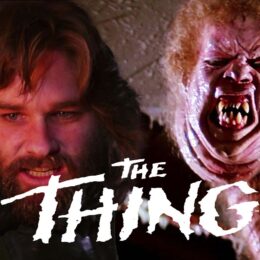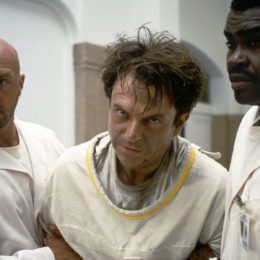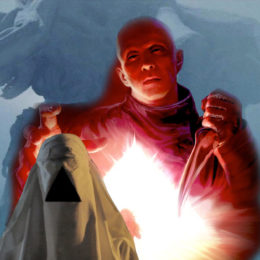THE THING (2011). An absurd prequel to the cult science fiction horror
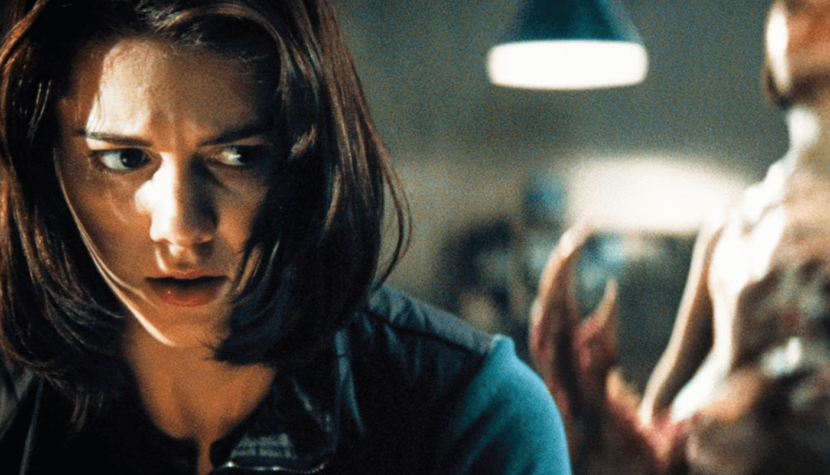
The Thing – John Carpenter’s 1982 film is unquestionably a cult horror. A milestone in inducing fear, special effects, and creating an atmosphere of paranoia and uncertainty. After almost 30 years, a prequel to this story graced the cinema screens.
The original told the story of the discovery of a spaceship and the frozen body of an Alien in Antarctica. It turned out that this creature – the titular Thing – assimilates and copies all forms of life it encounters. It can embody anyone and attack unexpectedly. According to calculations, once it escapes the American research station cut off from civilization, it will infect the whole world in a short time, and humanity will become part of a terrifying alien amalgam – equivalent to its total destruction.
In Carpenter’s film, we learned about Americans who unknowingly encountered the Thing that came from the Norwegian research station. It was the Norwegians who discovered the alien ship, and their story in the original film was revealed through video recordings and the sight of the burned station where a horribly deformed body and the corpse of a suicide victim were found. The film by Dutch director Matthijs van Heijningen Jr. tells the exact story of what happened to the Norwegians and how their encounter with the terrifying alien unfolded.

Was it necessary to present these events, especially after so many years? I doubt it. The ambiguity was one of the tools through which John Carpenter built the atmosphere of horror in the original. Knowing the monster’s behavior, our imagination created incredible versions of the Norwegian massacre. For this reason, the prequel was at a disadvantage from the beginning, especially among fans of the original. Unfortunately, after the premiere, it is evident that it does not even try to fight for the viewer, especially a new one.
In terms of the plot, the film is not impressive. Inconsistencies and absurdities are commonplace, and the viewer shakes their head at such bizarre situations as when Norwegian scientists, after discovering an alien spaceship (a breakthrough in science), recruit a 20-year-old American scientist for research. Does Norway really not have a qualified paleontologist? Or presenting the Thing itself – a perfect imitation of an organism whose only goal is to assimilate new beings – and instead of acting quietly and revealing itself only when necessary, it chases the characters like velociraptors from Jurassic Park. It’s hard to believe that this creature has the accumulated intelligence of all the life forms it has ever absorbed, unless it has the misfortune of encountering complete idiots. The film is summed up by a nightmarish sequence related to the alien ship, and if not for the last few minutes, which skillfully save it, I would rate it even lower. It’s hard to suspend disbelief when the film throws absurdities at us in such a serious way.
Additionally, the presented world clearly limps. The chilling atmosphere that permeated every shot of the original story is not felt, even though placing the action in the heart of Antarctica is one of the biggest potential advantages of the production. Only Marco Beltrami’s music, strongly referencing Ennio Morricone’s phenomenal soundtrack from 1982, allows us to occasionally feel the terrifying cold and emphasize the paranoia that prevails in the station.
However, the film’s biggest sin is its awful CGI. In Carpenter’s film, special effects were handled by Rob Bottin – a master of grotesquely imaginative depictions of blood-spraying, guts, monsters, and other bizarre transformations. Everything there was raw, realistically disgusting, covered in blood and other substances – just think of the iconic head on spider legs. In the prequel, the Thing is just artificial and can hardly convince the viewer to be afraid. It doesn’t differ from hundreds of other computer-generated designs that have been on cinema screens for the past few years. It’s clean, rarely covered in any substances, and its transformations are mostly – with a few exceptions – limited to the bestiary of a typical RPG game. Where are the alien flower-like creatures made of dog tongues and claws or faces exploding with a fountain of blood? Where are the stomachs devouring hands? The effects are smoothed, civilized, lacking in rawness. CGI was a natural step forward in the world of film, which unfortunately seems to have irreversibly eliminated the possibility of new visionaries like Bottin, Savini, Baker, or Winston, for whom ideas and figuring out how to bring them to life were more important than the computational speed of the computer they worked on. The Thing from 1982 can scare several times more than its prequel.

Related:
As for the actors, Mary Elizabeth Winstead presents herself very pleasantly, bringing freshness to the concept of the original film, where the cast consisted entirely of men. She is logical, keeps her cool, and tries to control the chaos when a band of men around her runs scared. The heroine thinks and calculates, which is a welcome change from other characters in contemporary horror movies who seem to be natural kamikazes. The rest of the cast does their job and makes us wonder who is infected. However, they are painfully correct, do not surprise with anything extraordinary, and cannot create as palpable a paranoid atmosphere in group scenes as in Carpenter’s version. Moreover, they are archetypes known from a billion other sci-fi movies: the geek, the arrogant scientist, or the silent lumberjack-like figure on steroids. They never come close to the well-thought-out character that Kurt Russell created earlier. I doubt whether the viewer, a few years after watching, will remember any names, as is the case with MacReady, Childs, or Blair from Carpenter’s version.
The film had to adapt to modern times and the demands of the film market. Unfortunately. A film like The Thing from 1982 could only be made by John Carpenter and only at that specific time – for which we must thank him forever – unfortunately, it is no longer possible to make films in the same way as 30 years ago, as Carpenter himself has shown since The Village of the Damned. Van Heijningen Jr.’s film is mediocre, but it is relatively painless to watch if you close your eyes to the computer nonsense, the clumsy narrative, and the script’s foolishness. It has some interesting plot solutions, tries not to copy previous ideas, has a decent pace, and ultimately shows respect for Carpenter’s film (a great scene during the end credits). At times, it can evoke feelings of uncertainty and allow you to feel the paranoia that affects the characters. However, all of this is average, done without heart, and by a team that simply performed the task assigned to them.
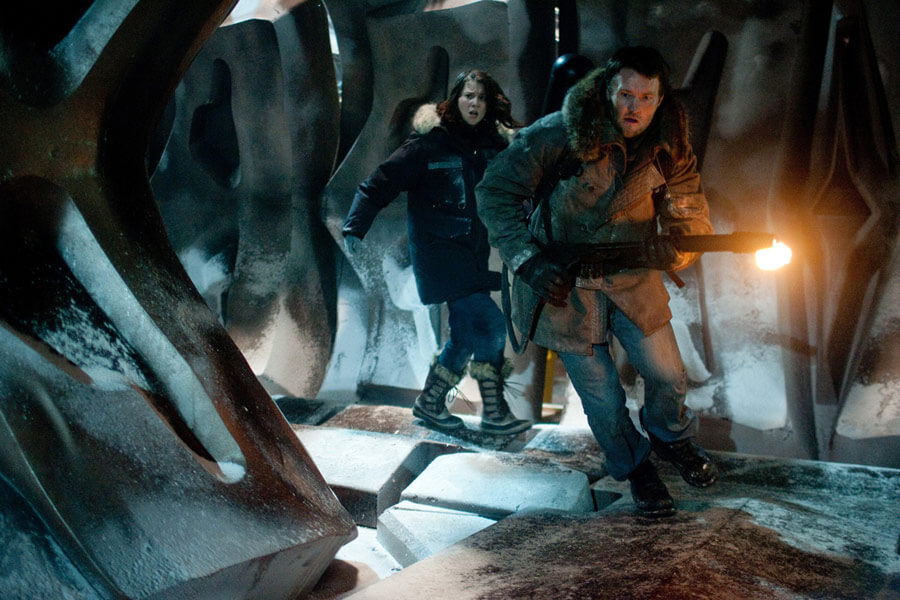
A funny and incredibly sad paradox of modern cinema is that such an average film, which 30 years ago would have been overshadowed by a huge number of truly imaginative and innovative horror films, is now better than 90% of horror films that appear in cinemas. If you want to see a horror movie on the big screen, I recommend the prequel to The Thing because it is much more interesting than, for example, another Saw, Final Destination, or the next remake of an 80s slasher where they slaughter another group of teenagers. Personally, I recommend stocking up on Carpenter, hiding in a warm home with a cup of coffee, turning off the heating, and watching an incredible horror movie that has practically not aged at all.


